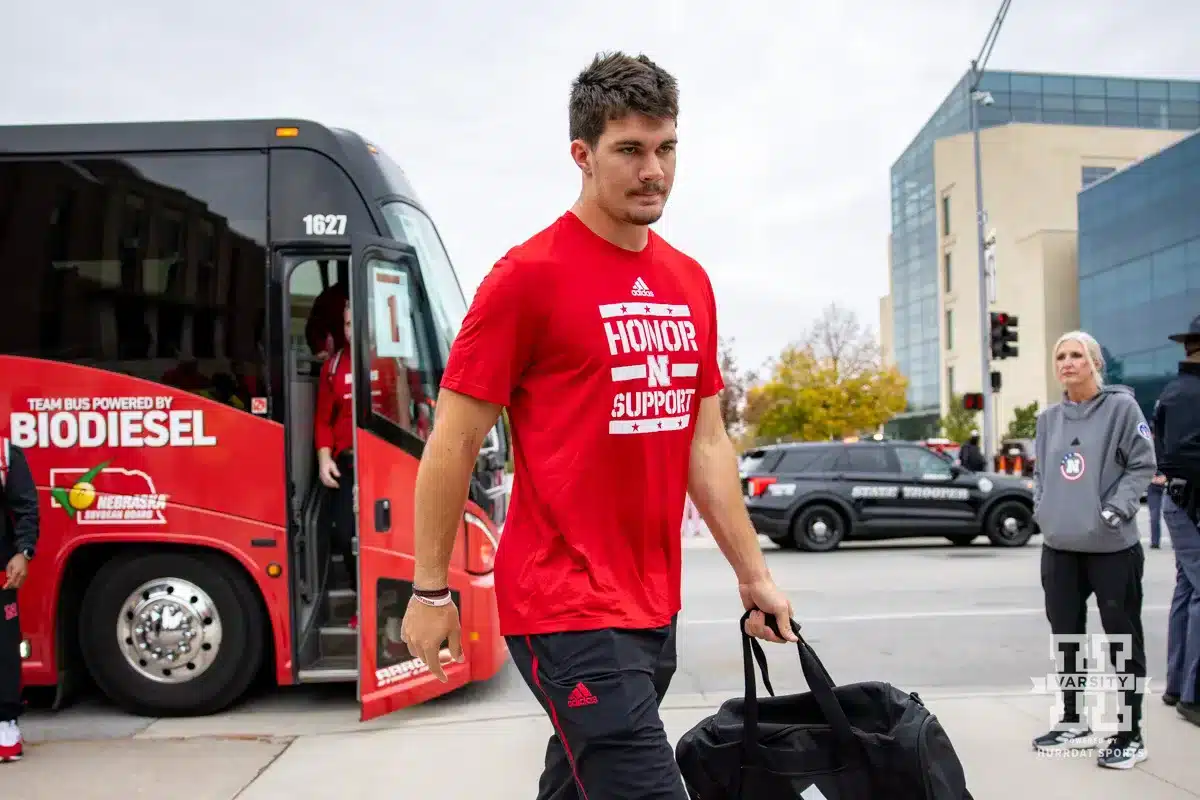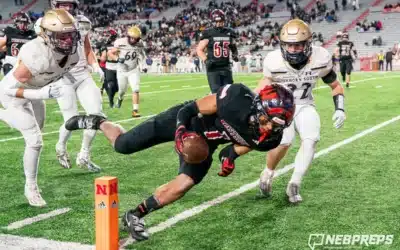Nebraska’s tight end room is homegrown central—and it matters. The top of the depth chart is all in-state talent with three very different tools: a true do-everything tight end, a versatile chess piece who invites trickery, and a pass-catch mismatch built to stress coverages. Together, they give the Huskers flexibility on every down and a clear identity that fits what this offense wants to be.
The headliners are Luke Lindenmeyer, Heinrich Haarberg, and Carter Nelson—each raised in Nebraska and each bringing something distinct. What makes this trio dangerous isn’t just the résumé; it’s how they let Nebraska change the picture for a defense without changing personnel. With one grouping on the field, the Huskers can shift from heavy to spread, motion into stacks, create a nub edge, or empty the formation entirely. That’s how you control tempo, force simple coverages, and win third downs.
Lindenmeyer has surged from relative afterthought to the most complete tight end in the room. He’s credible as an in-line blocker and enough of a receiving threat that linebackers can’t cheat run or pass when he breaks the huddle. That ambiguity is gold for a play-caller and a headache for defenders who might be fitting the run on one snap and carrying a route up the seam on the next.
Haarberg is the wild card. His value is in the “where” as much as the “what.” He can attach tight, flex into space, take a touch on jet, leak on a misdirection, or simply force a defense to respect the possibility of something creative. You might sense he’s getting the ball; you just don’t know from which spot, and that split-second of uncertainty is often the difference between a stop and a chunk play.
Nelson is the mismatch. He’s the pass-catch option who puts stress on safeties and outruns most linebackers. Split him wide to isolate, stack him to test rules, or keep him attached and make a safety tackle in space—any of those choices tilts coverage and creates grass for the rest of the offense. Even when he’s not the target, his presence can dictate leverage and help the run game.
Depth remains the practical question. An early injury trimmed numbers and put more weight on the top three. The staff would love a reliable fourth tight end to emerge during camp so they can lean into multiple-TE looks without overloading snaps. If that TE4 settles in, Nebraska keeps all its multiplicity while staying fresh for four quarters.
All of this meshes with the broader offensive plan. Nebraska wants formation variety, pace control, and matchup leverage without telegraphing intent. This room makes that possible. With the same eleven on the field, the Huskers can line up heavy, shift into a spread look, motion to create leverage, or get to empty—all while keeping the defense in base rules. That’s how you steal easy throws, soften boxes, and land explosives without living in risk.
Bottom line: Nebraska’s tight ends aren’t just local—they’re useful in all the ways a modern offense needs. If the health holds and the depth sorts itself out, this group can be a weekly advantage rather than a situational one, and one of the clearest reasons the Huskers feel more adaptable this fall.




